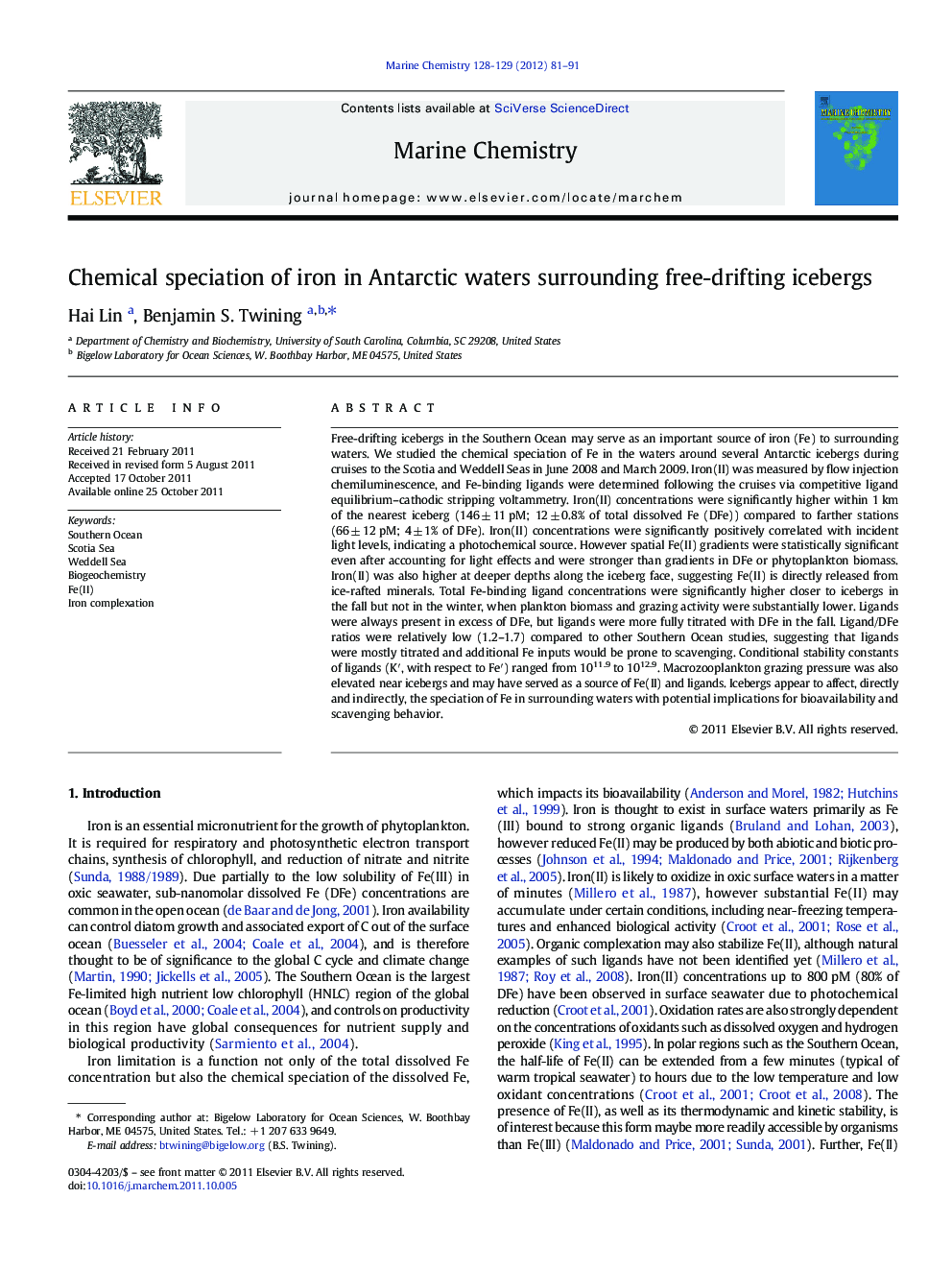| Article ID | Journal | Published Year | Pages | File Type |
|---|---|---|---|---|
| 1261868 | Marine Chemistry | 2012 | 11 Pages |
Free-drifting icebergs in the Southern Ocean may serve as an important source of iron (Fe) to surrounding waters. We studied the chemical speciation of Fe in the waters around several Antarctic icebergs during cruises to the Scotia and Weddell Seas in June 2008 and March 2009. Iron(II) was measured by flow injection chemiluminescence, and Fe-binding ligands were determined following the cruises via competitive ligand equilibrium–cathodic stripping voltammetry. Iron(II) concentrations were significantly higher within 1 km of the nearest iceberg (146 ± 11 pM; 12 ± 0.8% of total dissolved Fe (DFe)) compared to farther stations (66 ± 12 pM; 4 ± 1% of DFe). Iron(II) concentrations were significantly positively correlated with incident light levels, indicating a photochemical source. However spatial Fe(II) gradients were statistically significant even after accounting for light effects and were stronger than gradients in DFe or phytoplankton biomass. Iron(II) was also higher at deeper depths along the iceberg face, suggesting Fe(II) is directly released from ice-rafted minerals. Total Fe-binding ligand concentrations were significantly higher closer to icebergs in the fall but not in the winter, when plankton biomass and grazing activity were substantially lower. Ligands were always present in excess of DFe, but ligands were more fully titrated with DFe in the fall. Ligand/DFe ratios were relatively low (1.2–1.7) compared to other Southern Ocean studies, suggesting that ligands were mostly titrated and additional Fe inputs would be prone to scavenging. Conditional stability constants of ligands (K′, with respect to Fe′) ranged from 1011.9 to 1012.9. Macrozooplankton grazing pressure was also elevated near icebergs and may have served as a source of Fe(II) and ligands. Icebergs appear to affect, directly and indirectly, the speciation of Fe in surrounding waters with potential implications for bioavailability and scavenging behavior.
► We measured the speciation of iron in waters surrounding free-drifting icebergs. ► Iron(II) concentrations were higher in close proximity to icebergs. ► Iron(II) concentrations were higher closer to the bottom of icebergs. ► Iron-binding ligand concentrations were higher in proximity to icebergs. ► Iron-binding ligands may be produced by elevated grazing activity near the icebergs.
